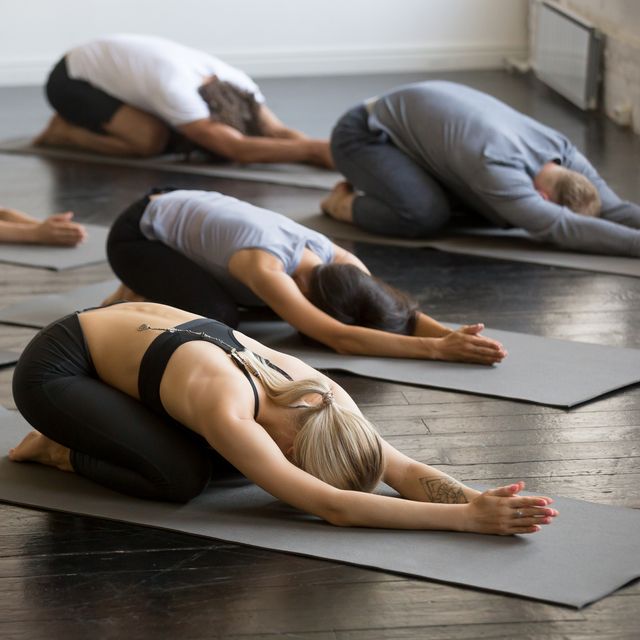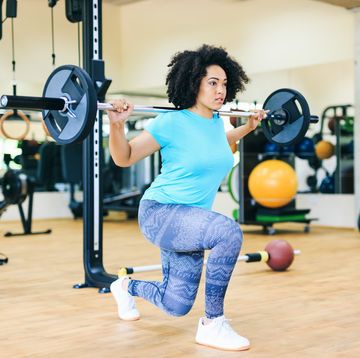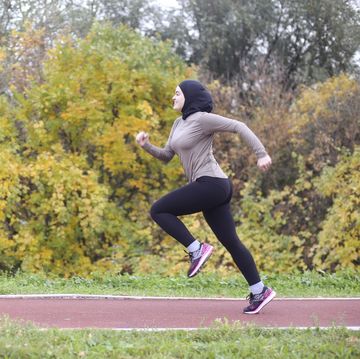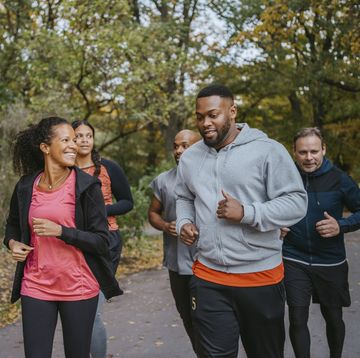- Three hot yoga classes weekly for 12 weeks significantly lowered blood pressure in people with stage 1 hypertension, preliminary research presented at the American Heart Association’s Hypertension Scientific Sessions found.
- Experts believe it is a combination of the heat as well as the breathing and flexibility moves that is responsible for this effect.
You’re looking down at a not-inconsiderable puddle of sweat, trying to breathe, holding a pose that seems way too long and you start to wonder: Is hot yoga actually any better than non-Hades yoga?
According to a preliminary research presented at the American Heart Association’s Hypertension Scientific Sessions, it’s certainly a big plus for your blood vessels—even if it’s tough on your yoga mat.
Standard, room-temperature yoga has been linked to better blood pressure effects in previous research, but this is one of the few studies to look at hot yoga specifically.
Researchers recruited 10 men and women, between the ages of 20 to 65, all with either elevated blood pressure or stage 1 hypertension. The participants were not taking any blood pressure medication and had not engaged in regular fitness activity for at least six months prior to the study timeframe.
Five participants were assigned to take 12 weeks of hot yoga classes, three times weekly for at least an hour per session, in a room at 105 degrees Fahrenheit. The other five were a control group, and did not do yoga at all, hot or otherwise.
At the end of the three months, systolic blood pressure for the yoga group had dropped from an average 126 mmHg to 121 mmHg. Average diastolic pressure also decreased, from 82 mmHg to 79 mmHg. Blood pressure didn’t change in the control group.
Although this is preliminary research and also a very small sample size, researchers found the results promising, said lead study author Stacy Hunter, Ph.D., an assistant professor and director of the cardiovascular physiology lab at Texas State University.
“I think the takeaway is that some evidence suggests hot yoga can reduce blood pressure in the absence of medications,” she told Runner’s World. “For those who enjoy this exercise mode, this may be a novel means of addressing hypertension, although larger studies need to be completed before this can be said with certainty.”
[Stay injury free on the road by getting on the mat with Yoga for Runners.]
Does it really have to be so hot, though?
Hunter confirms that it’s not the yoga practice alone—or even the heat by itself—that seems to lower blood pressure, but the unique combination of them. Unlike other types of fitness done in the heat, like a summer bootcamp class, yoga emphasizes breathing exercises and flexibility, as well as isometric contractions. When combined with heat exposure, it intensifies the advantages of each, said Hunter.
“Each of these has individually been demonstrated to reduce blood pressure or improve blood vessel function,” she stated. The results of their research is likely caused by all of these beneficial variables blended together.
But keep in mind that hot yoga is not for everyone, Hunter added. Exercising in hot conditions can increase the risk of heat-related illness for some people. She suggested checking with a physician prior to exercise, focusing on proper hydration, and knowing the signs and symptoms of heat illness.
Elizabeth Millard is a freelance writer focusing on health, wellness, fitness, and food.













